Earth Animals Secretly Shaped Star Wars’ Most Bizarre Characters
Star Wars is packed with strange creatures that feel oddly familiar. That’s no accident. Many of the galaxy’s oddest life forms are rooted in Earth’s real animals, with some you’ve probably seen in your backyard. So, George Lucas and his team didn’t have to look for characters beyond the planet; they looked to nature for inspiration, and it shows.
Chewbacca’s Primate Roots
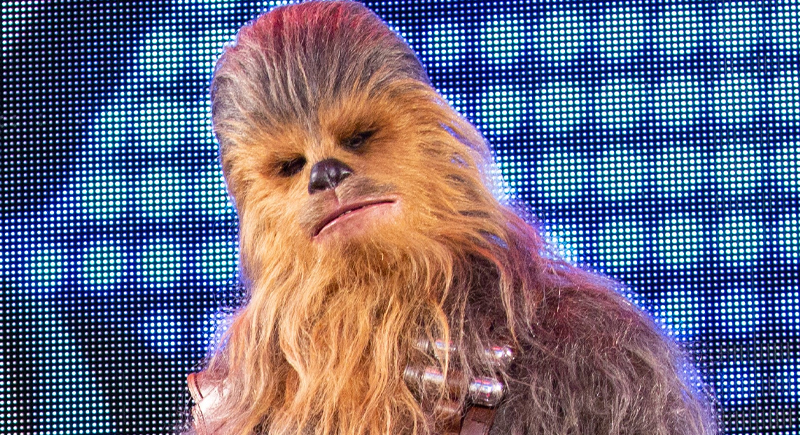
Credit: Wikimedia Commons
Actor Peter Mayhew watched gorillas to craft Chewie’s movement. The Wookiee’s upright posture, emotional growls, and social bonds all echo traits found in great apes. Combine that with gorilla strength and orangutan gentleness, and you’ve got one of Star Wars’ most beloved walking carpets.
Tauntauns Borrowed from the Arctic
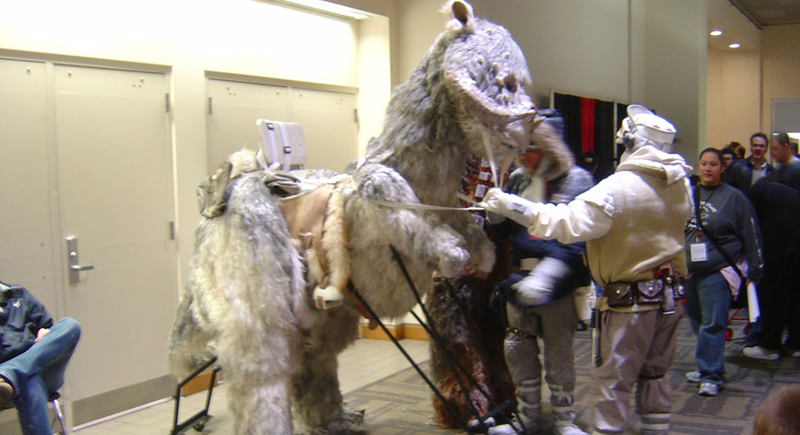
Credit: Wikimedia Commons
Hoth’s snow-walking feet work like those of snowshoe hares, while their heavy fur resembles that of yaks and musk oxen. Designers also pulled in bits from rams and kangaroos. The idea was to create something adapted to the bitter cold, like Earth’s tundra survivors.
Banthas Walked Like Elephants
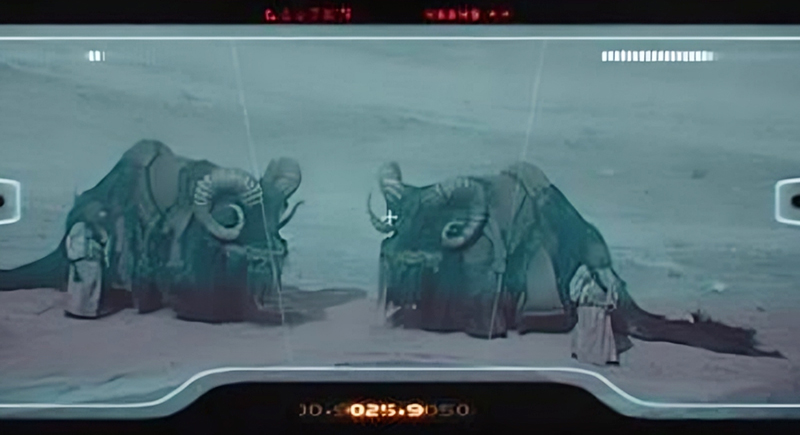
Credit: Wikimedia Commons
The Bantha’s shaggy bulk came from Mardji, an actual Asian elephant dressed in fur and fake horns during filming. Their herd behavior, massive presence, and slow gait mimic how elephants navigate harsh terrains. Even their loyalty to Tusken Raiders aligns with the familial bonds elephants show in the wild.
Jawas Have Meerkat Energy
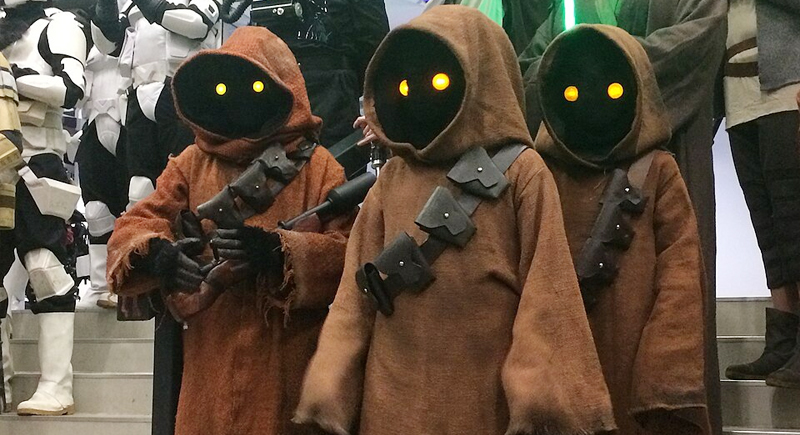
Credit: Wikimedia Commons
Small, jittery, and always in groups, Jawas share plenty with meerkats. Their curious chatter and scavenging lifestyle mimic how desert mammals survive by sticking together and staying alert. Their glowing eyes resemble nocturnal rodents like jerboas, which use big pupils to gather light in pitch-black conditions.
Jabba the Hutt’s Slug-Like Swagger

Credit: Wikimedia Commons
Jabba’s inspiration oozed straight from the garden. His boneless bulk mirrors slugs and snails, especially their slow crawl and slimy texture. Gastropods move using muscular contractions under a mucus layer, precisely how Jabba glides. Even his lounging lifestyle matches some slug species that conserve energy by hardly moving at all.
Mon Calamari Echo the Octopus
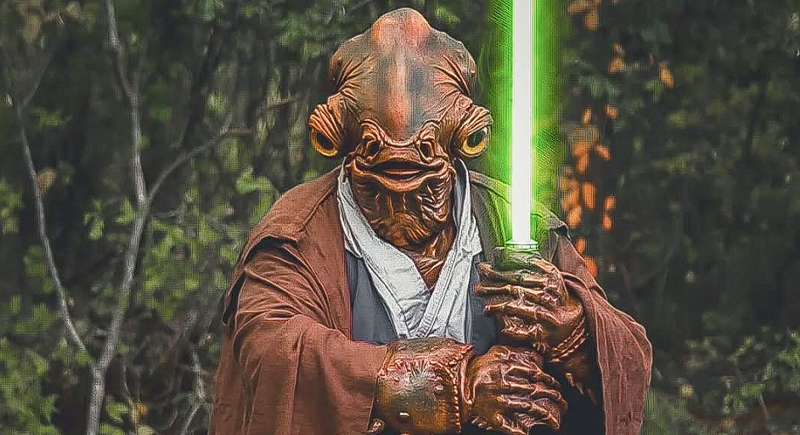
Credit: Instagram
Admiral Ackbar’s species were actually built like cephalopods. Mon Calamari have wide-set eyes, soft skin with shifting pigments, and a knack for strategy. Their fin-like arms nod to aquatic anatomy, and their intelligence lines up with real octopuses. “It’s a trap!” might as well be an octopus slogan.
Dewbacks Share DNA with Monitor Lizards
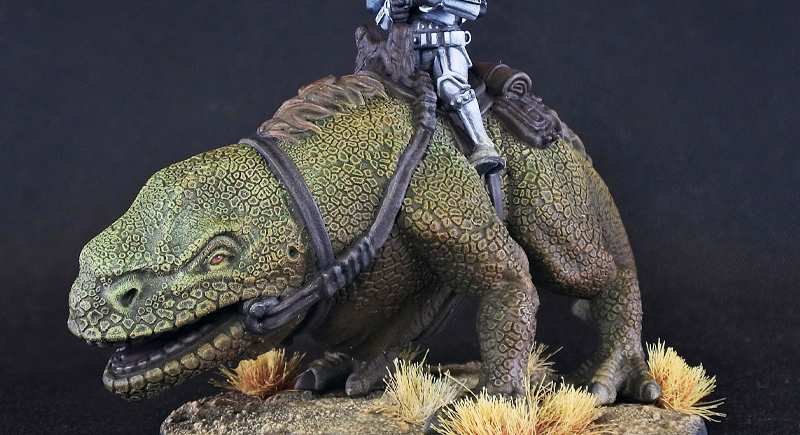
Credit: Reddit
If a Komodo dragon had a cousin in space, it’d be a dewback. Their leathery skin, lumbering crawl, and heat tolerance are textbook reptilian traits. Some desert lizards collect moisture on their scales, which could explain the “dew” in dewback.
Ewoks Look Like Teddy Bears, Act Like Apes
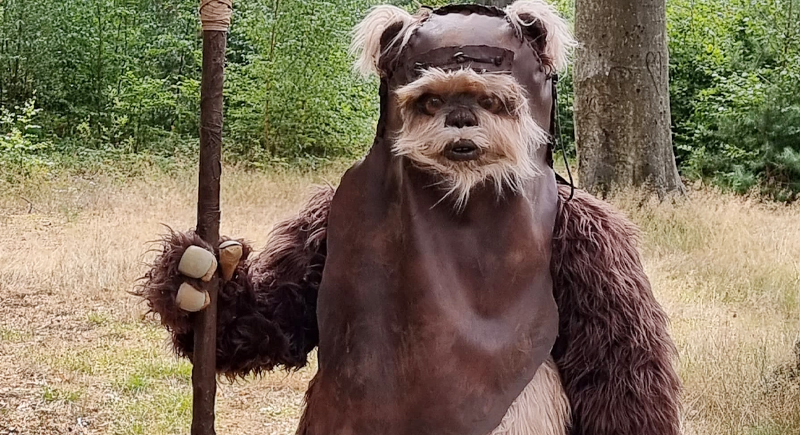
Credit: Wikimedia Commons
Ewoks were engineered to be cute, but their behavior draws heavily from primates. They use tools, live in tree-dwelling communities, and show tribal cooperation, but their flat snouts and rounded eyes borrow more from bear cubs. That design choice made them huggable and fierce.
Rancor, Born of Dinosaurs and Apes
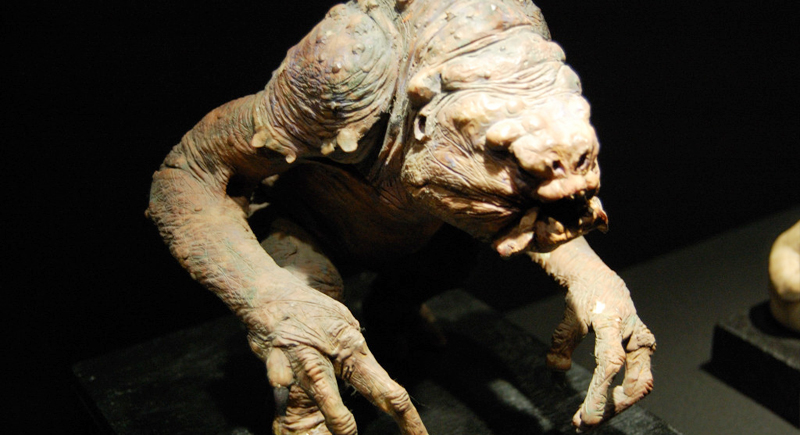
Credit: Wikimedia Commons
Designers wanted something with the menace of a theropod but the bulk of a heavyweight brawler. As such, the rancor combined features from T. rex, gorillas, and rhinos. Its thick skin and bone structure even resemble prehistoric megafauna.
Porgs Are Just Puffins in Disguise
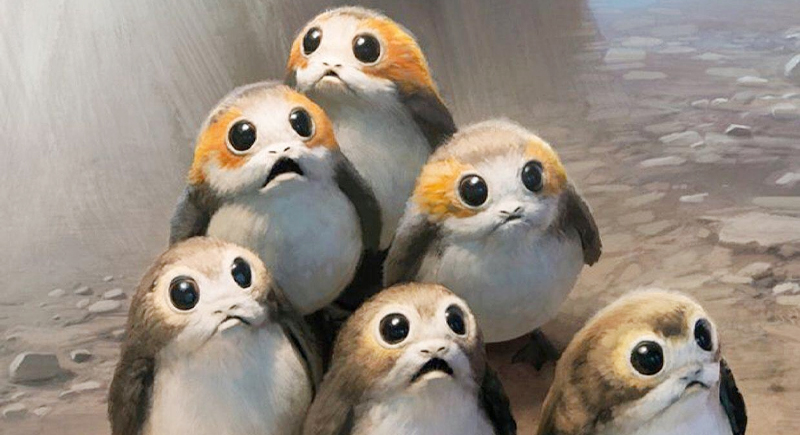
Credit: Reddit
Filming The Last Jedi on Skellig Michael meant working around puffins. Rather than digitally remove them, the team turned them into porgs. Their waddles, nesting habits, and wide eyes matched well. The calls were built from a mix of bird sounds, sealing their place as Star Wars’ most practical and charming accident.
Tauntaun Guts Reflect Real Animal Survival
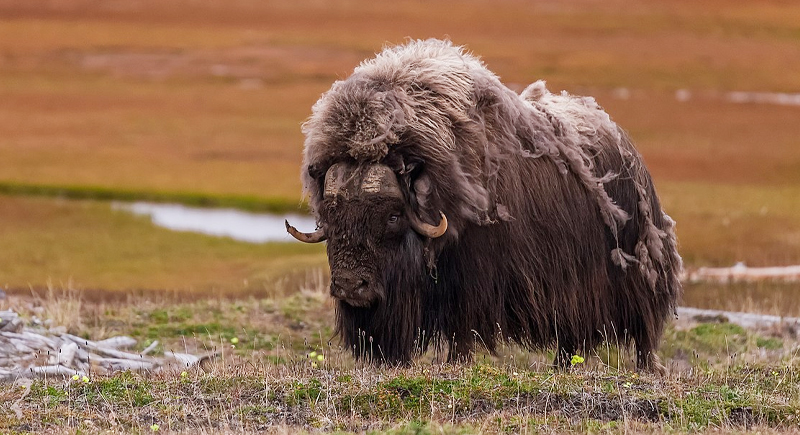
Credit: Wikimedia Commons
When Luke climbs into a tauntaun to survive the cold, it’s not sci-fi nonsense. Indigenous Arctic communities have used animal carcasses for warmth in emergencies, just like musk oxen or seals. Even the tauntaun’s quick freeze echoes how real animals perish in subzero extremes.
Gungans Leap Like Frogs, Breathe Like Salamanders
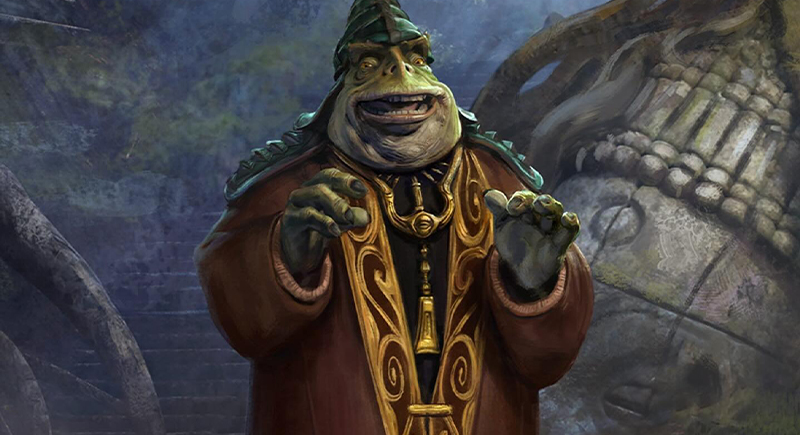
Credit: Instagram
Jar Jar Binks may be divisive, but his biology is clever. His leaping legs mimic frogs, and his facial structure mirrors axolotls with external gills. That slippery skin? Classic amphibian. Gungans function on land and water, just like real amphibians that absorb oxygen through both lungs and skin.
Womp Rats Resemble Real Desert Survivors
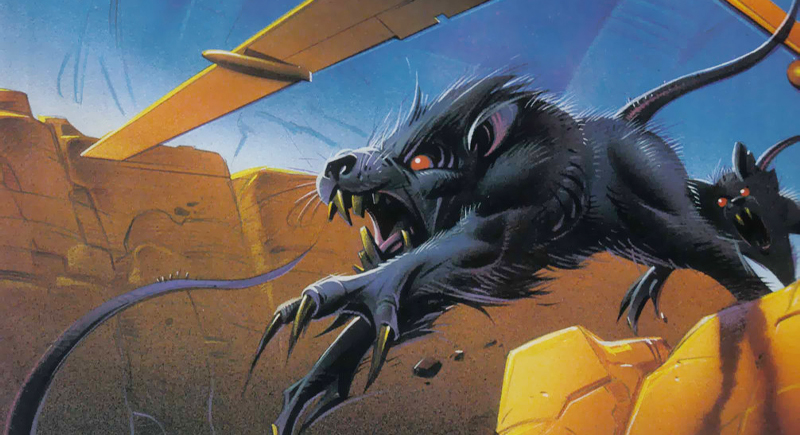
Credit: Reddit
Mentioned casually by Luke in A New Hope, womp rats were later shown to be scrappy, rodent-like creatures, likely inspired by kangaroo rats. These real desert rodents survive without drinking water, and their agility and desert hardiness offer a logical base for Tatooine’s infamous pests.
Nexu Combines Cat, Porcupine, and Spider Vision
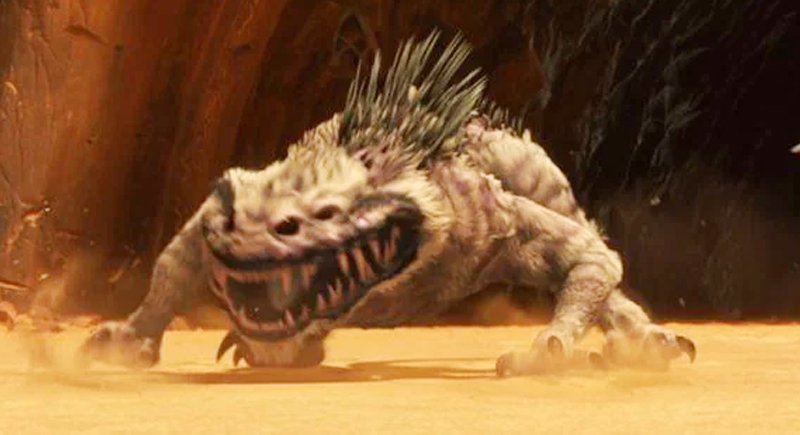
Credit: Reddit
The nexu’s creepy-crawly vibe comes from all directions. Its body screams big cat, but the spines suggest porcupine armor, and four eyes point to a nod to insects and arachnids with multi-lens vision. Add shark-like teeth and the agility of a leopard, and you get a creature designed to sense a threat before it strikes.
Wompas Take Cues from Polar Predators
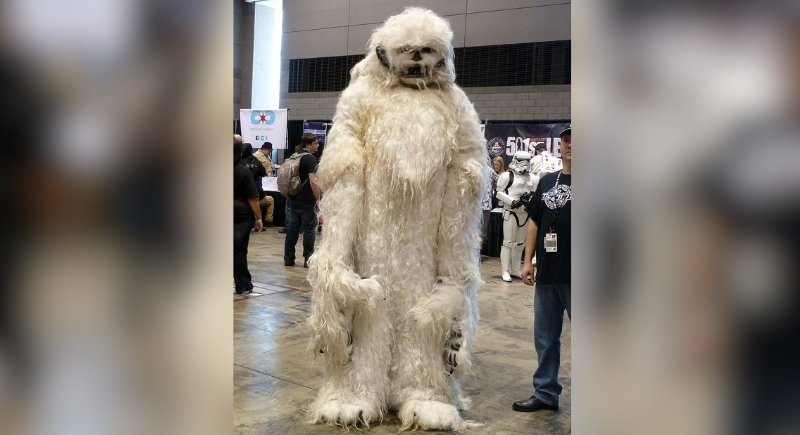
Credit: Wikimedia Commons
The snow wampa isn’t just a Yeti knockoff. Its stalking habits resemble polar bears, especially the tendency to drag prey into a lair. The fur, claws, and style all borrow from Arctic hunters who rely on stealth and muscle over speed.